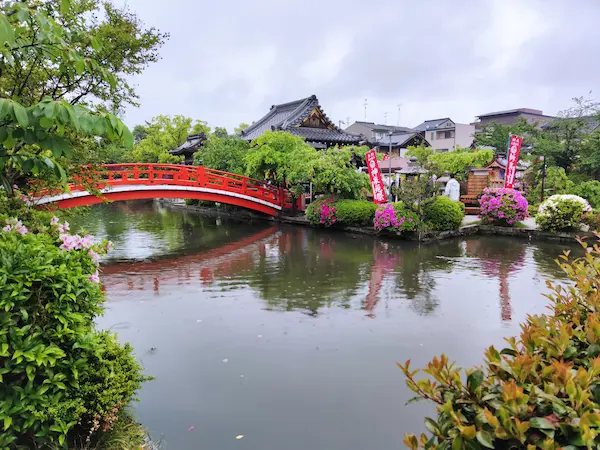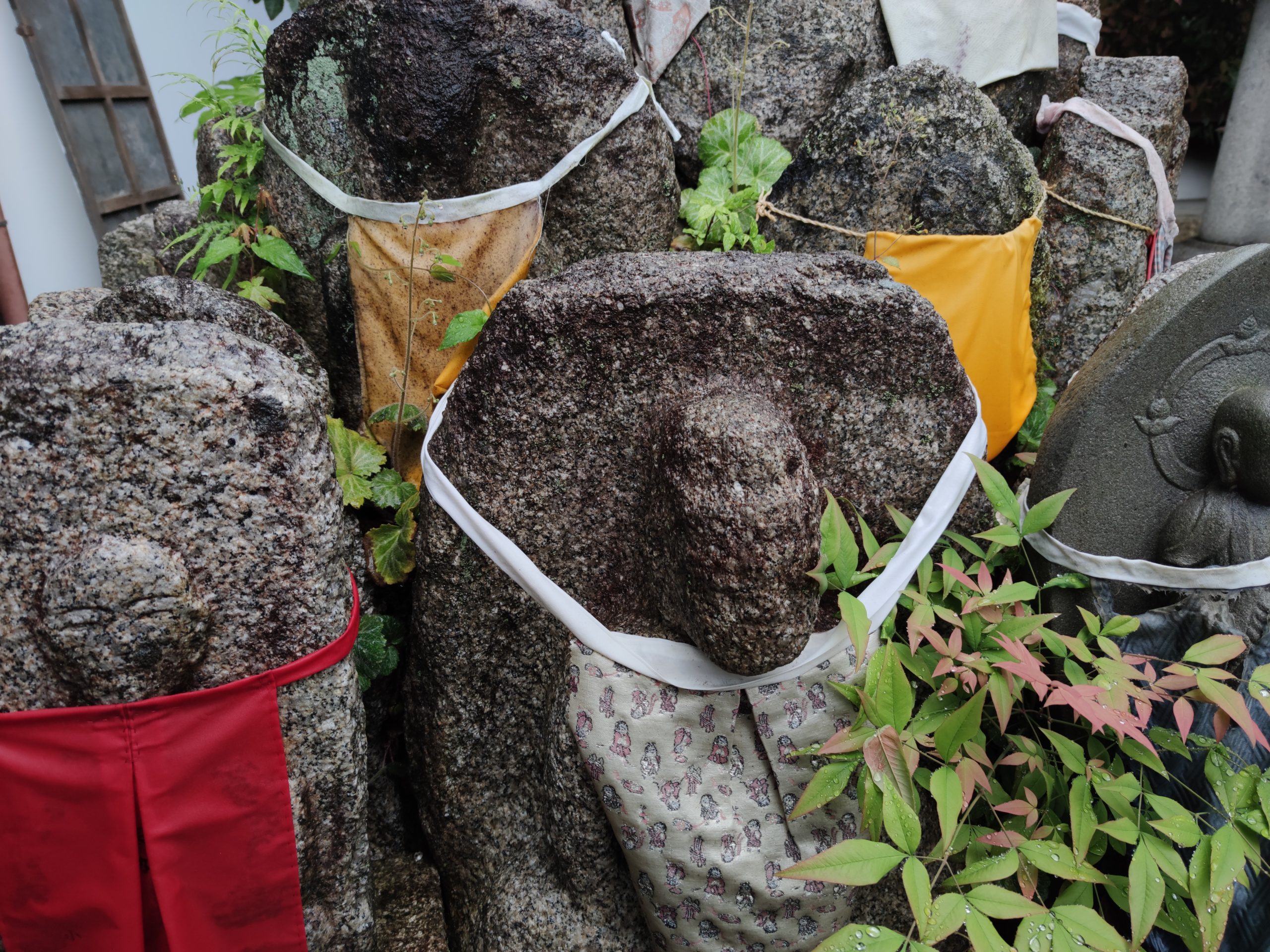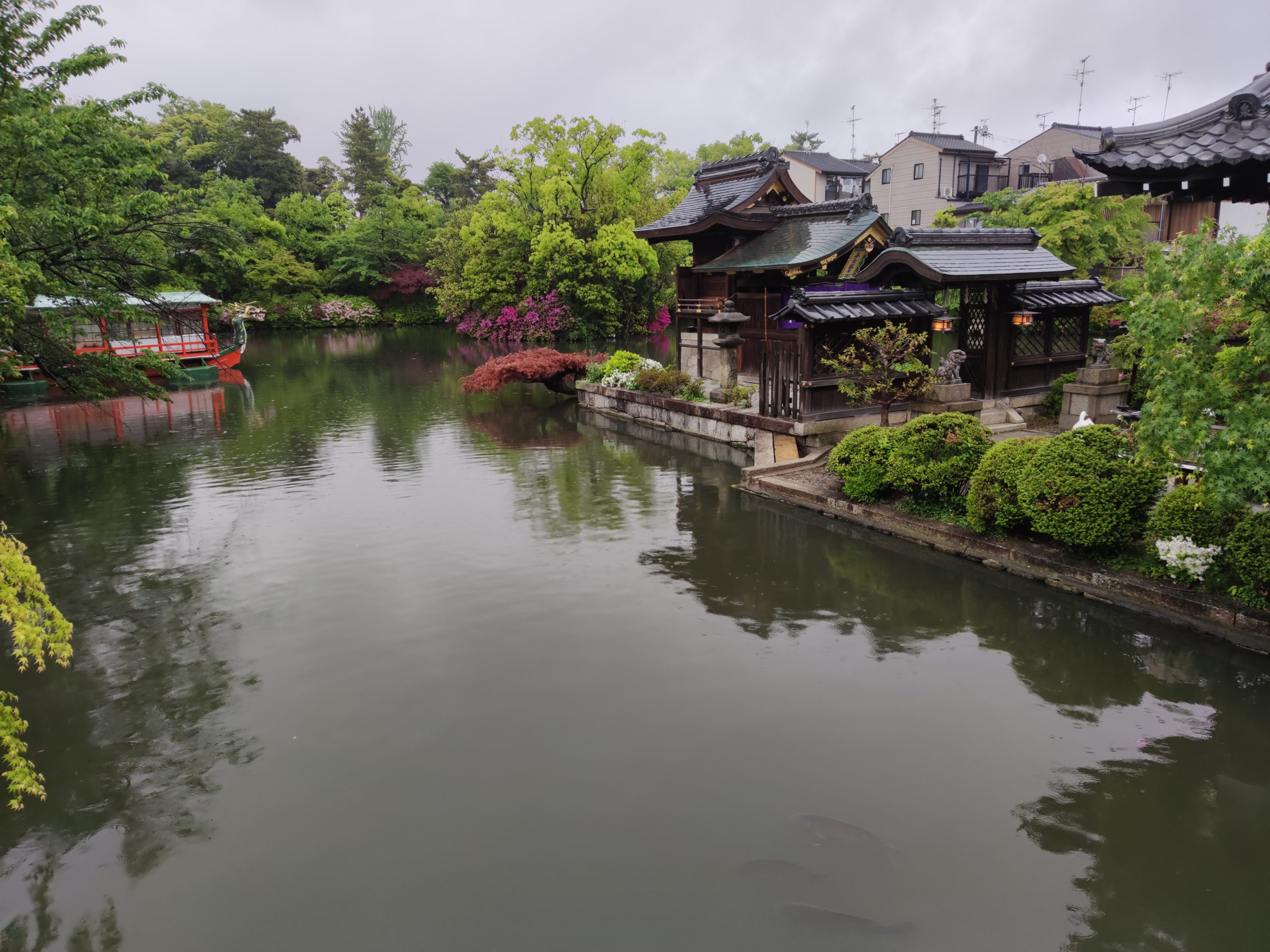Shinsen-en was a garden pond adjacent to the Daidairi (Imperial Palace) soon after the construction of the Heian-kyo Capital. But it was reduced in size during the Edo period (1603-1868) with the construction of Nijo Castle. Later it became a temple and Toji Temple manages it now. The following is an excerpt from the Shinsen-en official website.
Shinsen-en was built in 794 by Emperor Kanmu as a forbidden garden. Located southeast of Heian-kyo (Daidairi), it was a garden pond.
Since Emperor Kammu made his excursion to Shinsen-en in 800, successive emperors have held banquets at Shinsen-en. Emperor Saga made 43 (recorded) excursions to Shinsen-en, and in 812, he held the first “Hananoen-no-Setsu” at Shinsen-en, where he held a cherry blossom viewing and poetry contest.
In 824, when all of Japan was suffering from drought, Kobo-Daishi Kukai prayed by the pond in Shinsen-en by order of the Emperor Junna.
Shinsen-en became a sacred site for religious practices, and sutra readings and songs and dances were dedicated to pray for rainfall. The rain dance performed by Shizukagozen and Ono no Komachi, a famous Japanese poet, is still performed there today. According to the legend, it was here that Minamoto no Yoshitsune first met Shizuka Gozen.
During the Edo period, when Tokugawa Ieyasu built Nijo Castle, the spring water from Shinsen-en was taken in to fill the inner and outer moats of the castle, and Shinsen-en lost the northern part of its grounds.
This place is very interesting because it is a remnant of Heian-kyo. But it is not so beautiful as a garden. Probably that is the reason why many tourists do not visit this garden despite its proximity to Nijo Castle.





Nearby spots from Shinsen-en
On the other side of the road to the north is the site of Nijo Castle. However, to enter the castle, you must go to the east entrance. Tokugawa Ieyasu built Nijo Castle in 1603 to guard the Kyoto Imperial Palace. It also provided lodging for shoguns traveling to Kyoto.
Related articles:
[…] Shinsen-en was a garden pond adjacent to the Daidairi (Imperial Palace) soon after the construction of the Heian-kyo Capital. Compared to the past, the garden area is smaller and is now a temple. […]
[…] Shinsen-en, built in 794 as a forbidden garden, served as an imperial retreat and sacred site for religious practices. […]